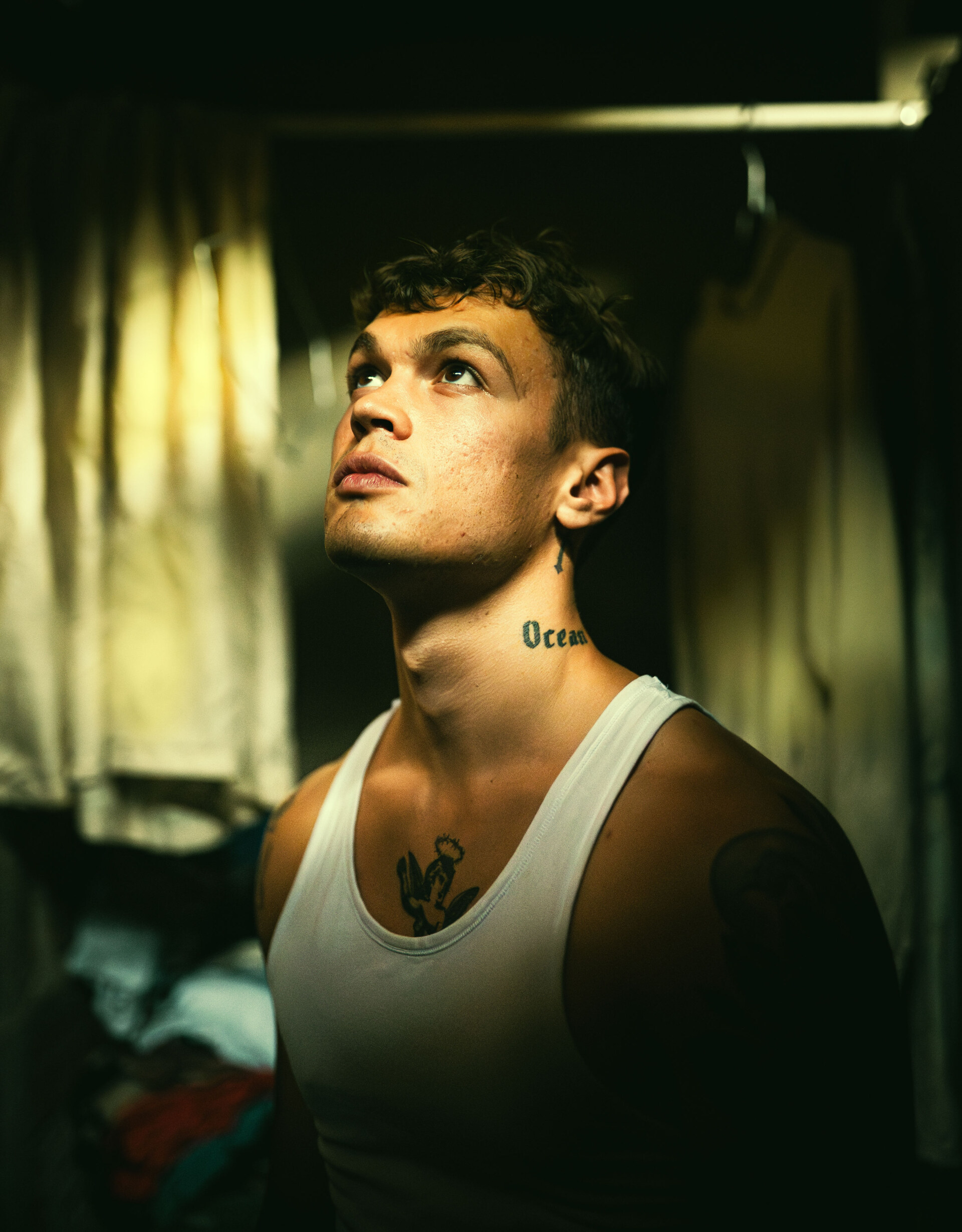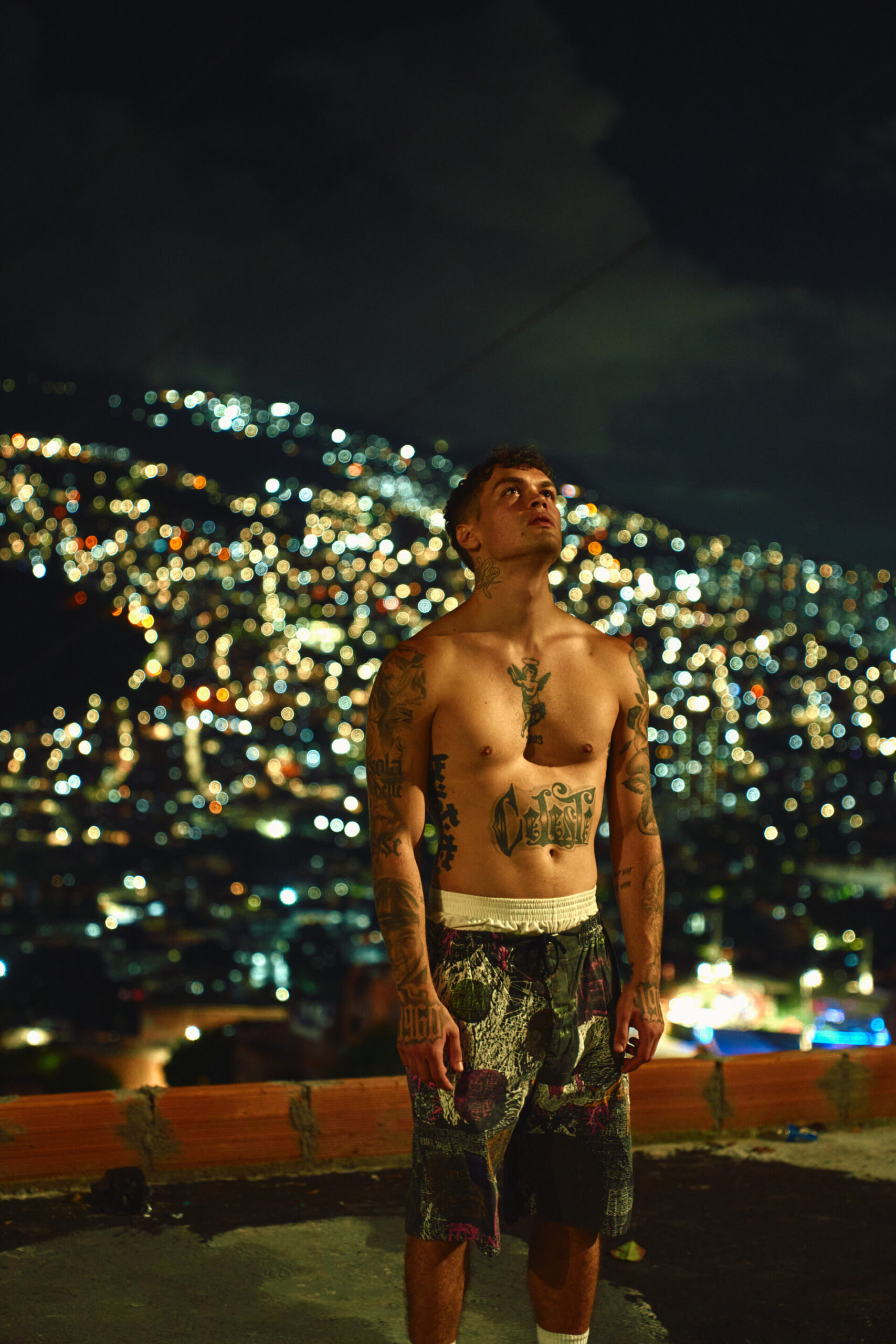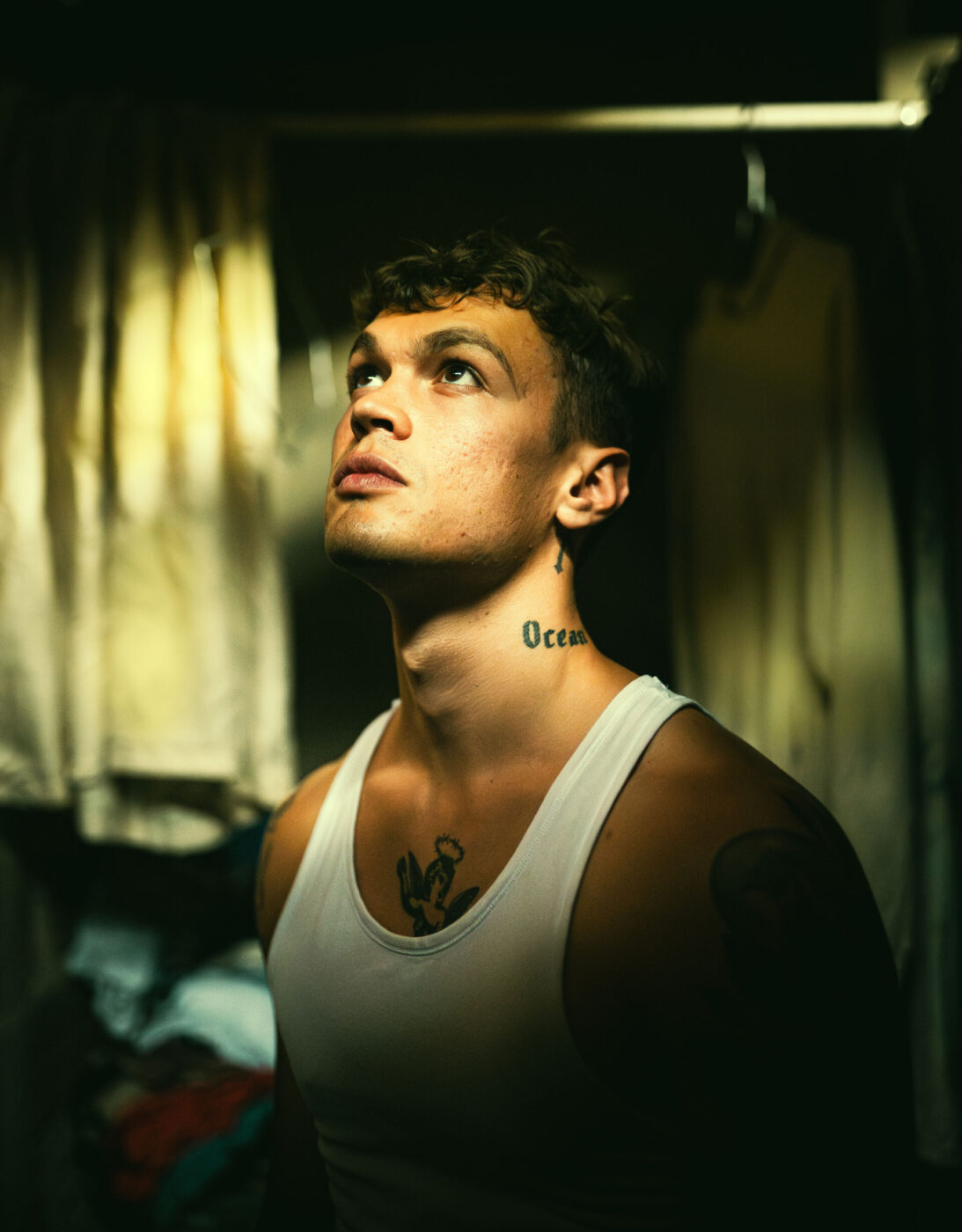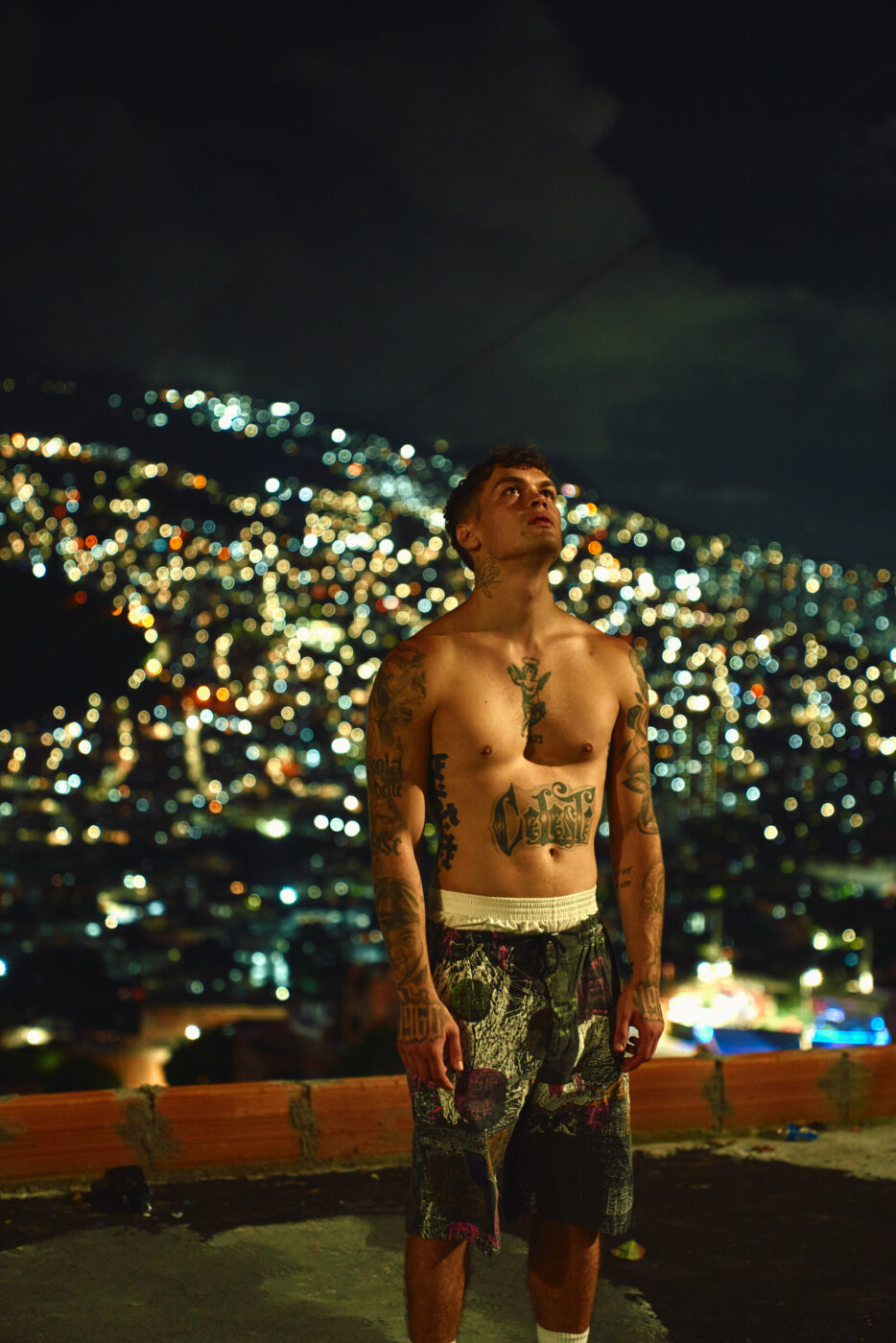His rise to fame was meteoric.
Born Riccardo Fabbriconi in 2003, Blanco grew up in the small town of Calvagese della Riviera, near Brescia, but his voice went worldwide in 2021, when the young singer’s debut album Blu Celeste took the Italian charts by storm with hits like “Notti in Bianco” and “Paraocchi”.
But it was his collaboration with Mahmood on “Brividi” that truly skyrocketed him to the top. The song, which won the prestigious Sanremo Music Festival in 2022, became an instant classic, representing Italy at Eurovision and earning Blanco international acclaim for his emotionally raw lyrics and boundary-pushing production. His music, which often balances vulnerability with rebellion, has resonated deeply with Italy’s younger generations, and at just 22, he’s already carved out his own space in the Italian music scene, blending rap, pop, and electronic influences with an unfiltered energy that feels refreshingly unpredictable. But what happens when you mix that kind of explosive creativity with the legendary voice of Mina?
It’s a pairing that no one saw coming, least of all Blanco himself. Reaching out to Mina, asking her to collaborate on the song “Un Briciolo Di Allegria”, was a shot in the dark. “I thought she would definitely say no,” he admits to us. Listening to Mina with his dad on childhood car rides, Blanco never imagined that years later, he’d be in a Milan hotel bathroom, listening to their duet for the first time–a surreal, full-circle moment.
And what a moment it has been. “Un Briciolo di Allegria”, which translates to “A Pinch of Joy”, was released in April 2023 and featured on his second album and her seventy-fifth. The track debuted at number one on the Italian singles chart and held the top position for five consecutive weeks. By the end of 2023, it ranked 11th on Italy’s year-end chart.
For THE MINA ISSUE, Blanco lets us in on his songwriting process and the behind-the-scenes scoop on how a track he didn’t even initially like transformed into the hit “Un Briciolo di Allegria”; a song about finding joy in the tiniest of things, even in the middle of chaos–a message we at Italy Segreta can certainly endorse.

ITALY SEGRETA: Your music often blends genres and defies easy categorization. What are some of the influences that have shaped your musical style?
BLANCO: My early influences definitely come from the world of Italian songwriting: [Adriano] Celentano, Mina, Gino Paoli—artists who played a big role in music history and whom my dad used to make me listen to as a kid during car trips when it was just him and me going somewhere. But since I was a child, I have listened to everything, any genre; it could be techno, reggaeton, rap. For me, if a song is good, it’s simply good.
IS: Your songs often capture pure emotion and energy. Can you tell us about your writing process? Do you tend to start with lyrics, melodies, or a particular feeling you want to convey?
B: When I write a song, I’m very free—it depends a lot on the people I collaborate with to create music. Right now, I’m working with new artists, and it’s interesting how each one has their own creative process; you always learn something. Sometimes I go into the studio already having a clear idea of the emotion I want to express, with a sound in mind; other times, I just go with the flow. One phrase, in particular, has stuck with me: “If you know how to listen, the words are already inside the music.” Sometimes, that’s exactly what happens.
IS: Did you have a personal connection to Mina’s work while growing up? Why did you decide to reach out to her for a collaboration?
B: Mina has been part of my musical background since I was a child (I think this is true for most of the Italian population). To me, she represents an international musical icon. I decided to contact her because I thought she would definitely say no. From the moment I got an affirmative response, I anxiously waited for the day I would receive the demo.
IS: How did you approach blending Mina’s distinctive sound with your unique style for “Un Briciolo Di Allegria”? Were there any unexpected moments or discoveries during the process?
B: When I first listened to the demo, I was in a hotel in Milan. I rushed to the bathroom in the lobby to hear it, and I was beyond happy. I didn’t expect our voices to blend so well together.
IS: What was it like recording between Lugano and Milan, with you and Mina in different places? What was your relationship with Mina throughout the process?
B: I had written this song, and at first, it wasn’t one of my favorites. I played it for my team, and I felt uncertain about it–but I had the feeling that if I added a collaboration with Mina, it would completely change things. We sent it to her, and she liked it. We didn’t have direct contact, but I sent her some pastries from my bakery. Not meeting her in person kept a sense of legend alive for me.
IS: Can you tell us more about the meaning and story behind the lyrics? What does “Un Briciolo Di Allegria” mean to you?
B: It’s a song written to express that even in despair, you can find those little things that bring you joy—those crumbs: passing by a place you know that brings you peace, playing soccer, anything that evokes positive memories. For me, this song represents the search for light in the midst of darkness.
IS: Your collaboration with Mina connects two generations of Italian music. How did you approach this opportunity to create something that speaks to an audience of all ages?
B: It’s not something you consciously approach or think about when making music. When I write a song, I don’t aim to reach a specific audience or speak to everyone—I do it out of love for music. But I have to say, it really makes me happy when I see such a diverse audience at my concerts, made up of people from so many different generations.
IS: Take us behind the scenes of the music video: what inspired the aesthetics and storyline?
B: The music video was conceived by Simone Peluso. What we wanted to convey was the chase of this cat (Mina), symbolizing something unattainable, intangible. The video aims to express that very sense of the unreachable. We shot it in a beautiful location, Villa Augusta in Ariccia.
IS: Are there any other exciting collaborations on the horizon? Are there any artists you dream of working with?
B: I’m working a lot in the studio, but I can’t reveal anything yet. I would have loved to collaborate with Freddie Mercury.
IS: As someone who rose quickly in the music world at such an early age, what advice would you give to young emerging artists in Italy?
B: The advice I can give is not to let the system consume you. Make music only when you feel the fire and the need to do it. If that feeling fades, it’s better to stop and wait until you feel that urge again.


